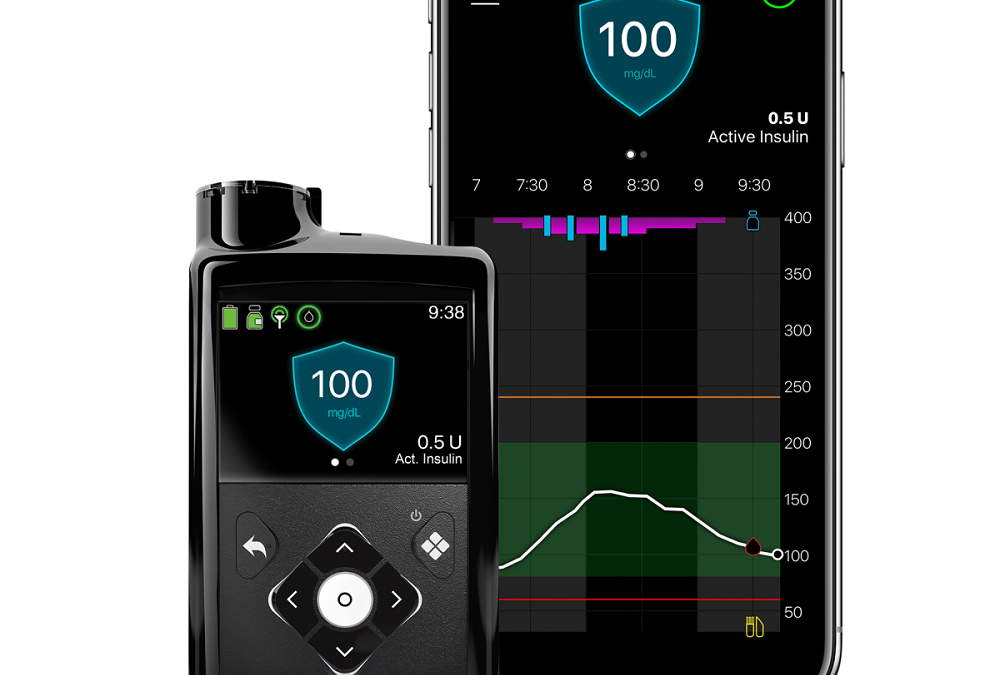One of my favorite topics – insulin pumps! I use insulin pumps for type 1 and type 2 diabetics. Insulin pumps have historically been used for type 1 diabetes, but I began using them for any diabetic requiring insulin over 5 years ago and I’ve never looked back.
Here are my top reasons for using insulin pump therapy:
- Uses an average of 25% less insulin than shots
- Improves insulin absorption
- Improved glucose control and stability
- Reduced insulin resistance
- Beta cell preservation
- Potential weight loss
- Reduced risk of long-term complications
- Heart, kidneys, eyes, nerves
Now you’re saying to yourself: All of that sounds great! So why don’t more people use insulin pump therapy? And my answer is: I’m not sure! My guess is two-fold: (1) a lack of published, real -life research on pump therapy, especially in type 2; (2) a lack of education and experience on the part of healthcare providers to confidently manage insulin pump therapy. I’m working to reduce both those barriers. I completed research on the improved A1c control we achieved when changing type 2 diabetics from multiple daily injections to insulin pump therapy, and I’ve submitted it for publication! I’m also a national speaker for Medtronic Diabetes, which manufactures my insulin pump of choice. I was asked by Medtronic to create a professional education presentation to teach fellow healthcare providers across the US – and the world! – how to interpret insulin pump reports and help patients get the best glucose outcomes possible. The presentations have been incredibly successful already, so wish me luck on my publication!
So, what makes insulin pump therapy so miraculous? Quite simply, it’s the method of insulin delivery. Insulin pens inject a larger amount of insulin into a depot that is formed in the subcutaneous (fat) tissue beneath the skin. We’re not in control of how quickly or slowly the insulin absorbs, and much of the timing depends on what you’re doing. If you’re more active or your body temperature is warmer, insulin will absorb faster. If you’re less active or cooler, the insulin will absorb more slowly. It’s also harder to match the action of the insulin with the rise of your glucose levels depending on what you’ve eaten. A meal that is higher in fat, fiber, and protein results in a slower glucose rise, which means your insulin levels may peak (or spike) faster than your glucose levels, resulting in a low blood sugar. The reverse is also true: sugars that absorb faster, such as candies, cakes, juice, and soda, are likely to cause your sugar to spike before your insulin peaks, which may cause low blood sugars 1-1.5 hours later when the insulin kicks in.
Insulin pump therapy resolves most of these issues by using continuous subcutaneous insulin infusion. If the beta cells in your pancreas were working properly, they’d release ultra rapid acting insulin into your blood stream to unlock your cells, let glucose into the cells, where our bodies metabolize glucose for energy. But the pancreas controls how much insulin is secreted by releasing small amounts in response to your glucose levels: if your glucose levels rise, your beta cells release more insulin; if your sugar levels fall, your beta cells will release less insulin or stop the insulin delivery altogether to keep your sugars at a normal level. Sensor-augmented insulin pump therapy does the same thing. Your sensor will read your glucose level every 5 minutes, transmit that data to the insulin pump via Bluetooth, where the insulin pump algorithm will respond to the sensor glucose trends by increasing, decreasing, or pausing your insulin delivery to keep your sugar at a pre-programmed “normal” level such as 120 mg/dL. You can enter your carbs and blood sugars for an extra bolus (dose) of insulin, but your pump and sensor will do 85% of the work in the background to keep your sugar levels more stable whilst using only the amount of insulin required, thereby reducing insulin resistance and improving your overall glucose control!
There are some pitfalls to insulin pump therapy, and that is mostly insurance coverage and affordability. You will no longer have to take any insulin injections, including long and short acting insulins. You will have a monthly payment for the pump (until it’s paid for, then it’s yours), the monthly cost of supplies, and the cost of rapid-acting insulin vials (such as Humalog®, Novolog®, Fiasp®, or Lyumjev®). Most people find the cost is comparable, if not cheaper, than paying for 2 insulins plus needles or syringes. It is more expensive for others, depending on your individual health insurance plans and deductibles, but the vast majority of my patients tell me they’re willing to pay extra for the improved control and peace of mind that comes with pump therapy. Medtronic and Dexcom also offer cost assistance for their products, so check with your healthcare provider or product territory manager for additional information.
*Please note: Medicare covers insulin pump therapy, but in a somewhat complicated way. Medtronic and Tandem are DME (durable medical equipment) pumps and are covered under part B. Insulin that is infused via a DME pump is also covered under part B with appropriate documentation, making it a great option to reduce the impact of part D deductibles and the coverage gap (“donut hole”). Your healthcare provider must order specific lab tests (fasting c-peptide + concurrent fasting glucose, or insulin autoantibodies), required by Medicare, to assess whether or not you qualify for coverage under part B. Simply getting the labs done does not qualify you; this is the complicated part so talk to your healthcare provider or territory manager. OmniPod is a patch pump and V-Go is a patch device, both of which are only covered under part D; therefore the insulin is also covered under part D only. This can be more expensive on some Medicare part D plans, but not all, and still requires that you satisfy your deductible as well as monitor your progress toward the coverage gap.
Without hesitation, insulin pump therapy is the most powerful tool in my clinical arsenal to treat insulin resistance for patients who require exogenous (external) insulin therapy. I am passionate about pump therapy; schedule an appointment today to discuss how pump therapy may work for you!

